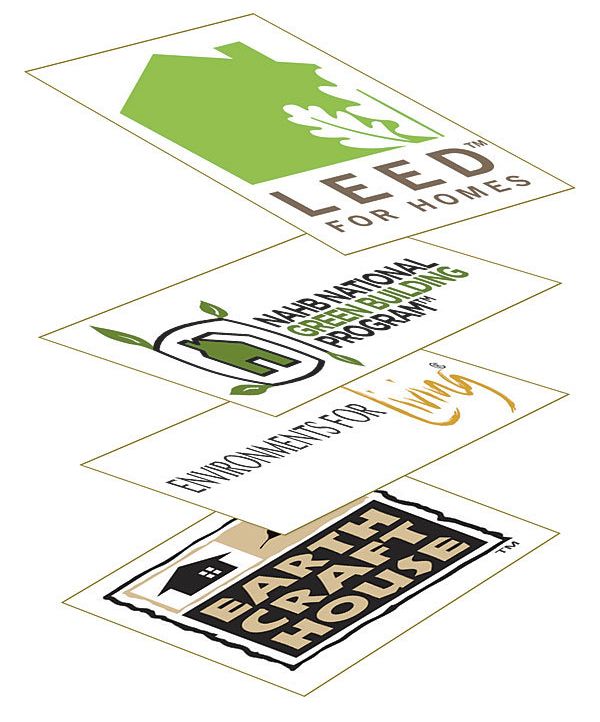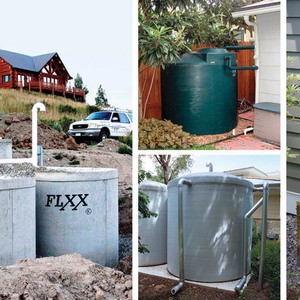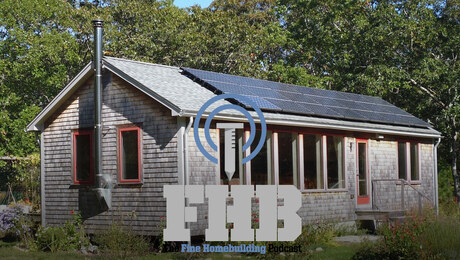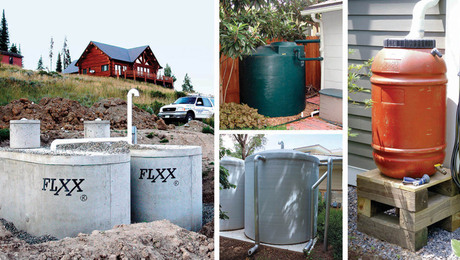
Synopsis: With the current emphasis in green building, many home builders may find themselves wondering how to be acknowledged for building green. Additionally, homebuyers may want to know that they’re buying a house that has been vetted and certified as a green structure. To this end, there are a number of programs outlining attributes of green building. FHB contributing writer Matthew Teague sorts through the data and offers details on the three big national programs and the multitude of local, state, and regional programs.
The origin of green building
Green building has come a long way. Only a few years ago, the words brought to mind fields of windmills and rooftops clad with solar panels—expensive propositions that in most cases were neither practical nor affordable for builders or buyers. In the past decade, however, building green has become more economical and more mainstream. You don’t have to build a house out of recycled tires or water your garden with bathwater. Simply build smart, and you’ll save energy and money. The green-building concept has become less daunting, resulting in a market that’s calling for more green homes and an industry full of builders willing to supply them.
Not that long ago, homebuyers looking for a green home had to rely on the reputation of local, state, or regional green-building programs. If a green-building program didn’t exist, buyers had to place complete trust in the builder—a marketing challenge for builders and a leap of faith for buyers. In 1996, the Department of Energy launched the Energy Star for Homes program, which focused on energy consumption rather than building practices. There simply weren’t any national green-building certification programs that applied to residential structures, so even the definition of what constituted a green home was nebulous. In recent years, however, two dominant national programs began issuing green-built certifications, and a third, older program may be drawing new breath.
Program may be drawing new breath. LEED for Homes was implemented by the U.S. Green Building Council (USGBC) in early 2008 after two years as a pilot program. A similar program, the National Green Building Standard (NGBS), was initiated by the National Association of Home Builders (NAHB) in January 2009. A third program, Environments for Living (EFL), was created in 2001 and was revamped as a green program in 2007 by construction conglomerate Masco. In addition to the three national programs, builders and homeowners now also can choose from more than 100 local, state, and regional green-building programs.
Speaking to builders who’ve enrolled in these programs, you find two dominant themes: First, there’s a definite learning curve to building a certified-green house; and second, the green-building process is worth learning. Beyond the obvious environmental arguments, there now are convincing economic reasons to have your next house certified green.
Gain recognition in the marketplace
Residential green-building programs are young, but all early signs of the economic advantages of certification and the market’s demand for certified-green homes are positive. A May 2009 study spearheaded by non profit green-building program provider Earth Advantage showed that in the Portland, Oregon, area, certified homes sold at an average of 12% more than non-certified houses. The same study showed that certified homes sold faster. A study done by McGraw-Hill Construction for the USGBC estimates that in the next five years, 10% to 12% of all new homes will have had green-building practices incorporated into their construction.
For more photos and information on local, state, and regional green building programs, click the View PDF button below.

























